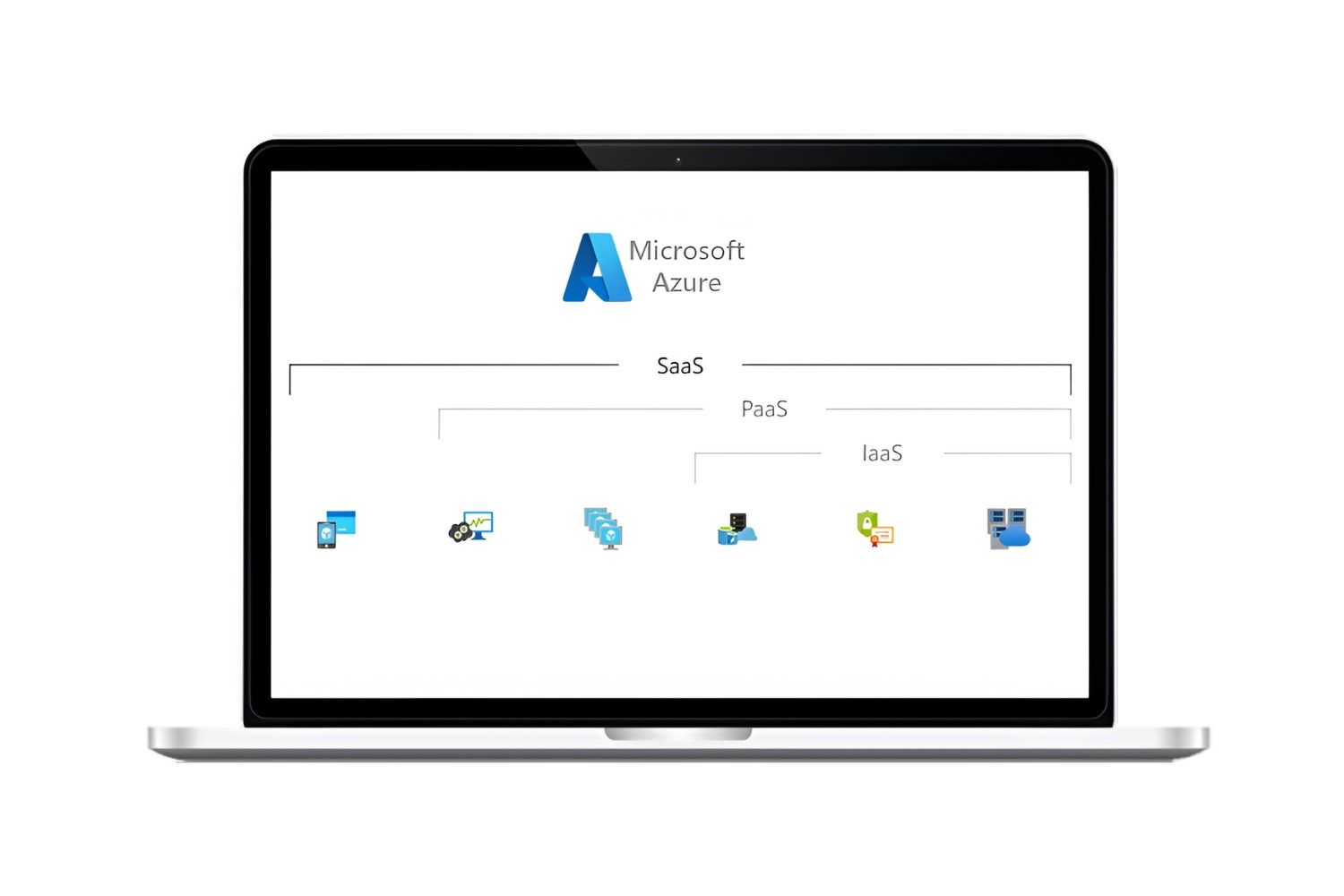Introduction
SaaS Product Management is a vital role in the software industry that focuses on the development and success of Software-as-a-Service (SaaS) products. In today’s digital landscape, SaaS has become increasingly popular as it offers businesses the flexibility and scalability they need to operate efficiently. But what exactly is SaaS Product Management, and what does it entail?
SaaS, or Software-as-a-Service, refers to a software distribution model where the software is hosted on the cloud and is accessed by users over the internet. This eliminates the need for users to install and maintain the software on their own devices. Instead, they can access it from anywhere, using any device with an internet connection. This model offers several advantages, such as cost-effectiveness, scalability, and easier updates and maintenance.
On the other hand, Product Management is the strategic process of guiding a software product throughout its entire lifecycle, from conception to development, launch, and ongoing improvement. It involves identifying market needs, defining product features, creating a roadmap, collaborating with various stakeholders, and ensuring the successful delivery of the product.
When these two concepts come together, SaaS Product Management emerges as a specialized discipline that focuses on managing and optimizing SaaS products. The SaaS Product Manager plays a crucial role in understanding market demands, aligning the product with customer needs, and driving its success.
The role of a SaaS Product Manager requires a unique blend of technical expertise, business acumen, and customer-centric thinking. They must navigate the complexities of the software industry and continually evolve their product to meet the ever-changing needs of customers.
In this article, we will delve deeper into the world of SaaS Product Management, exploring the key skills required, the responsibilities involved, and the challenges faced by SaaS Product Managers. We will also provide some valuable tips to effectively manage SaaS products and ensure their long-term success.
What is SaaS?
Software-as-a-Service, commonly known as SaaS, is a software distribution model where applications are delivered over the internet as a service. In this model, instead of purchasing and installing software on their own servers or devices, users can access the software through a web browser, paying a subscription fee for its usage.
SaaS offers numerous advantages to businesses of all sizes. Firstly, it eliminates the need for upfront infrastructure and software costs, making it a cost-effective option. Companies no longer need to invest in servers, databases, or licenses, as everything is managed by the SaaS provider. This results in a lower total cost of ownership and enables smaller businesses to access high-quality software that they may not have been able to afford otherwise.
Secondly, SaaS provides scalability and flexibility. With traditional software, upgrading or adding new features can be a time-consuming and costly process. On the other hand, SaaS products are typically hosted on cloud servers, allowing for easy scalability and the ability to quickly adapt to changing business needs. Users can easily increase or decrease their usage and take advantage of new features and enhancements without any interruptions.
Another key advantage of SaaS is the accessibility it provides. Users can access their applications and data from any device with an internet connection, allowing for remote work and collaboration. This level of accessibility is particularly beneficial for businesses with remote teams or employees who travel frequently.
Additionally, SaaS vendors usually provide regular software updates and maintenance, ensuring that users always have access to the latest features and bug fixes. This relieves businesses from the burden of managing software updates and frees up their IT resources to focus on more strategic initiatives.
Overall, SaaS has revolutionized the software industry by offering a more affordable, flexible, and scalable alternative to traditional software models. It allows businesses to access powerful applications without the need for upfront investments and provides the agility needed to stay competitive in today’s rapidly evolving digital landscape.
What is Product Management?
Product Management is a strategic discipline that focuses on the end-to-end lifecycle of a product, from its conception to its development, launch, and ongoing improvement. It involves understanding customer needs, defining product features, collaborating with cross-functional teams, and ensuring the successful delivery and adoption of the product in the market.
Product Management is not limited to software products but extends to physical goods, services, and digital offerings as well. However, in the context of this article, we will focus on product management in the software industry.
A Product Manager plays a central role in product management. They are responsible for guiding the product through every stage of its lifecycle and acting as the primary advocate for the customers. They work closely with stakeholders, including development teams, designers, marketers, salespeople, and customer support, to gather insights, define the product roadmap, and make strategic decisions.
One of the key aspects of product management is understanding customer needs and pain points. Product Managers conduct market research, gather feedback from customers and users, and analyze data to identify opportunities for product improvement. They then prioritize these requirements and work with the development team to translate them into features and functionalities that meet the needs of the target audience.
Product Managers are also responsible for creating a clear product strategy and roadmap. They align the product vision with business goals and ensure that the development team is working towards the right objectives. This involves making tough decisions, managing trade-offs, and balancing competing priorities to deliver a product that is both valuable to the customer and aligned with the company’s overall strategy.
Throughout the development process, Product Managers act as the bridge between various stakeholders. They collaborate with designers to create a user-friendly and intuitive interface, work with development teams to ensure timely delivery of features, and partner with marketing and sales teams to develop effective go-to-market strategies. Their ability to communicate effectively and facilitate collaboration is key to the successful execution of the product plan.
Beyond the launch of the product, Product Managers continuously analyze user feedback, monitor market trends, and track product performance. They iterate on the product based on customer insights and aim to deliver a product that evolves with the changing needs of the market.
In summary, Product Management is the art and science of guiding a product from its inception to market success. It requires a combination of customer empathy, strategic thinking, and effective collaboration to deliver valuable solutions that meet customer needs and drive business growth.
The Role of a SaaS Product Manager
A SaaS Product Manager plays a critical role in the success of a SaaS product. They are responsible for overseeing the entire lifecycle of the product, from conception to launch and beyond. The role requires a unique combination of technical expertise, business acumen, and customer-centric thinking to ensure that the product meets market needs and drives user satisfaction.
One of the primary responsibilities of a SaaS Product Manager is to understand the target market and customer needs. They conduct market research, analyze competition, and gather insights to develop a deep understanding of customer pain points and challenges. This knowledge helps them shape the product strategy and make informed decisions about features, functionalities, and overall product direction.
The SaaS Product Manager acts as the voice of the customer within the organization. They work closely with stakeholders, including developers, designers, marketers, and salespeople, to ensure that the product is aligned with customer expectations and business goals. They gather feedback, conduct user interviews, and monitor user behavior to continually improve the product and enhance the user experience.
Another crucial aspect of the SaaS Product Manager’s role is translating customer needs into a tangible product roadmap. They prioritize feature requests, define release cycles, and collaborate with development teams to ensure that the product is delivered on time and within budget. They also work closely with the UX/UI designers to create an intuitive and user-friendly interface that meets the needs of the target audience.
In addition to product development, a SaaS Product Manager is responsible for the product’s go-to-market strategy. They work closely with marketing teams to define the positioning, messaging, and pricing of the product. They collaborate with the sales team to develop sales enablement materials and provide product training. They also monitor the product’s performance and conduct regular market analysis to identify opportunities for growth and address any challenges that arise.
The SaaS Product Manager is not only focused on the initial launch of the product but also on its long-term success. They analyze customer feedback, track key metrics, and iterate on the product to ensure that it continues to meet customer needs and remains competitive in the market. They anticipate market trends and proactively identify opportunities for product enhancements and new features.
Overall, the role of a SaaS Product Manager is multifaceted and requires a holistic approach to product management. They must balance customer needs, business objectives, and technical feasibility to deliver a successful SaaS product that drives user satisfaction and business growth.
Key Skills for SaaS Product Managers
Being a SaaS Product Manager requires a diverse skill set to effectively navigate the complexities of the software industry and drive the success of a SaaS product. Here are some key skills that are essential for SaaS Product Managers:
- Technical Expertise: SaaS Product Managers should have a solid understanding of technology and the ability to work closely with development teams. They don’t need to be developers themselves but should have enough technical knowledge to communicate effectively with the development team and understand the technical constraints and possibilities of the product.
- Market Awareness: It is important for SaaS Product Managers to be deeply familiar with the target market, including industry trends, customer needs, and competitive landscape. They should continuously monitor the market to identify opportunities and make informed decisions about product direction.
- Customer Empathy: SaaS Product Managers must have a strong sense of empathy for the end-users. They should be able to understand their pain points, frustrations, and needs to create a product that truly addresses their challenges and provides value. Conducting user research, gathering feedback, and analyzing user behavior are essential aspects of this skill.
- Strategic Thinking: SaaS Product Managers need to think strategically and have a clear understanding of how their product fits into the overall business strategy. They should be able to define a product vision, set cohesive goals, and create a roadmap that aligns with both customer needs and business objectives.
- Communication and Collaboration: Effective communication and collaboration skills are paramount for SaaS Product Managers. They need to work closely with cross-functional teams, including developers, designers, marketers, and salespeople, to ensure a seamless product development process. They should be able to articulate their vision, actively listen to feedback, and facilitate collaboration among team members.
- Analytical Skills: SaaS Product Managers should be able to effectively analyze market data, customer feedback, and product metrics to gain insights and make data-driven decisions. They should be comfortable with tools and methodologies for data analysis, such as product analytics software, A/B testing, and user testing.
- Adaptability and Flexibility: The software industry is dynamic and constantly evolving. SaaS Product Managers need to be adaptable and willing to embrace change. They should be open to feedback, willing to iterate on the product, and quick to adapt to new technologies and market trends.
- Business Acumen: SaaS Product Managers should have a good understanding of business principles and be able to think strategically about product monetization, pricing models, and revenue generation. They should be able to analyze market opportunities, identify growth strategies, and make decisions that drive business success.
These are just some of the key skills that are crucial for SaaS Product Managers. Mastering these skills and continuously honing their craft will enable SaaS Product Managers to effectively navigate the challenges of product management and contribute to the success of their SaaS products.
Key Responsibilities of SaaS Product Managers
SaaS Product Managers have a wide range of responsibilities that revolve around the successful development, launch, and management of SaaS products. Here are some key responsibilities that are typically associated with the role:
- Market Research: SaaS Product Managers are responsible for conducting market research to understand customer needs, identify market trends, and assess the competitive landscape. They gather insights through user interviews, surveys, and industry analysis to inform product strategy.
- Product Strategy: Based on market research and analysis, SaaS Product Managers define a clear product strategy. They determine the product’s target audience, positioning, and differentiation factors. They also align the product strategy with the overall business goals.
- Product Roadmap: SaaS Product Managers create a product roadmap that outlines the planned features, enhancements, and improvements over the product’s lifecycle. They prioritize these items based on market needs, business objectives, and technical feasibility.
- Requirements Gathering and Prioritization: SaaS Product Managers work closely with customers, stakeholders, and development teams to define the product requirements. They gather feedback, analyze user needs, and prioritize features and functionalities based on their strategic value and impact on customer satisfaction.
- Cross-Functional Collaboration: SaaS Product Managers collaborate closely with cross-functional teams such as developers, designers, marketers, and salespeople. They facilitate effective communication, coordinate efforts, and ensure that everyone is aligned and working towards a common goal.
- UI/UX Design: SaaS Product Managers work with UX/UI designers to create an intuitive and user-friendly interface. They provide guidance on the user experience and ensure that the product meets the needs and expectations of the target audience.
- Product Development: SaaS Product Managers oversee the product development process, collaborating with development teams to ensure that milestones are achieved, and deliverables meet quality standards. They monitor progress, address issues, and make adjustments as needed.
- Product Launch and Go-to-Market Strategy: SaaS Product Managers develop go-to-market strategies, including positioning, pricing, and launch plans. They work with marketing and sales teams to create marketing collateral, sales enablement materials, and achieve successful product launches.
- Product Performance Analysis and Iteration: SaaS Product Managers monitor key product metrics, analyze user feedback and behavior, and iterate on the product accordingly. They continuously assess market trends, competitive landscape, and customer needs to identify opportunities for improvement and anticipate user demands.
- Customer Success: SaaS Product Managers play a vital role in ensuring customer success. They work closely with customer support teams to address customer issues, gather feedback, and ensure that the product meets and exceeds customer expectations.
These responsibilities may vary based on the organization and the stage of the product’s lifecycle. However, the underlying goal remains the same: to deliver a high-quality SaaS product that meets customer needs, drives user satisfaction, and contributes to the overall success of the business.
SaaS Product Management Process
The SaaS Product Management process is a systematic approach to developing, launching, and managing SaaS products. While there may be variations depending on the organization, the process typically involves the following key stages:
- Market Research: The process starts with thorough market research to identify customer needs, assess competition, and gather insights on market trends. This research helps inform the product strategy and roadmap.
- Product Strategy: Based on the market research, SaaS Product Managers define a product strategy that includes the target audience, key value propositions, and competitive differentiation factors. The strategy sets the direction for the product and aligns it with overall business goals.
- Requirements Gathering: SaaS Product Managers work closely with customers, stakeholders, and internal teams to gather requirements for the product. They conduct user interviews, analyze user feedback, and prioritize features based on their impact and strategic value.
- Product Roadmap: Using the gathered requirements, SaaS Product Managers create a product roadmap that outlines the planned features and enhancements over time. The roadmap helps prioritize development efforts and provide a clear view of the product’s future direction.
- Development and Testing: SaaS Product Managers collaborate with development teams to execute on the product roadmap. They work together to develop, test, and deploy new features and functionalities. Regular communication and feedback loops are essential to ensure progress and maintain alignment.
- UX/UI Design: SaaS Product Managers work closely with UX/UI designers to create an intuitive and user-friendly product interface. They provide guidance on user experience and ensure that the design aligns with the target audience’s needs and expectations.
- Product Launch: SaaS Product Managers develop a go-to-market strategy, including positioning, pricing, and marketing plans. They collaborate with marketing and sales teams to create launch materials, conduct product training, and plan a successful product launch.
- Product Performance Analysis: After the product launch, SaaS Product Managers monitor key product metrics, such as user adoption, engagement, and customer satisfaction. They analyze user feedback, conduct customer surveys, and iterate on the product to enhance its performance and address any issues.
- Continued Assessment and Iteration: SaaS Product Managers continuously assess the market, competitive landscape, and user needs. They gather market insights, analyze trends, and make data-driven decisions to prioritize future product updates and enhancements. The goal is to ensure the product remains relevant and valuable to the target audience.
This iterative process ensures that the SaaS product evolves over time, aligns with customer needs, and delivers long-term value. Effective collaboration, continuous learning, and a customer-centric mindset are key to driving success throughout each stage of the SaaS Product Management process.
Challenges in SaaS Product Management
While SaaS Product Management offers many opportunities, it also presents several unique challenges that SaaS Product Managers must navigate. Understanding and addressing these challenges is crucial for ensuring the success of SaaS products. Here are some common challenges in SaaS Product Management:
- Rapid Technological Advancements: The software industry evolves at a rapid pace, with continuous advancements in technology. SaaS Product Managers must stay updated with emerging trends, new platforms, and evolving customer expectations to ensure their products remain competitive.
- Market Competition: The SaaS landscape is highly competitive, with numerous players in various industries offering similar solutions. SaaS Product Managers must differentiate their products and continuously find ways to remain ahead of the competition.
- Customer Retention: Retaining customers is a significant challenge for SaaS Product Managers. The ease of switching SaaS providers means that customer loyalty must be earned through exceptional user experiences, ongoing value delivery, and proactive customer support.
- Scalability and Performance: SaaS products must be able to scale and handle increasing user load without sacrificing performance. SaaS Product Managers need to ensure that their products are built to handle growth, maintain high availability, and deliver consistent performance as the user base expands.
- Data Security and Privacy: SaaS products typically handle sensitive user data, heightening the importance of data security and privacy. SaaS Product Managers must implement robust security measures and ensure compliance with data privacy regulations to safeguard user information and maintain trust.
- Customer Onboarding and Adoption: Getting customers onboarded and successfully using the SaaS product can be a challenge. SaaS Product Managers need to provide comprehensive product documentation, user guides, and tutorials to facilitate user adoption and minimize barriers to entry.
- Managing Feature Requests: SaaS Product Managers often face a high volume of feature requests from customers. Balancing customer demands with product vision and development resources can be challenging. Prioritizing features and managing customer expectations is crucial to maintain focus and deliver the most impactful enhancements.
- Continuous Iteration and Innovation: SaaS Product Managers need to continually iterate on the product to meet evolving market needs and customer expectations. This requires a balance between maintaining stability for existing users and innovating to attract new customers. Striking the right balance and avoiding disruption to the user experience can be a challenge.
- Effective Collaboration: SaaS Product Managers need to collaborate effectively with cross-functional teams, including developers, designers, marketers, and salespeople. Ensuring clear communication, alignment of goals, and efficient coordination can be a challenge, especially with geographically dispersed teams.
These challenges highlight the dynamic and constantly evolving nature of SaaS Product Management. Overcoming these challenges requires adaptability, strategic thinking, strong problem-solving skills, and a customer-centric mindset. By recognizing and proactively addressing these challenges, SaaS Product Managers can drive the success of their products and deliver maximum value to their customers.
Tips for Effective SaaS Product Management
Effective SaaS Product Management is crucial for the success and growth of SaaS products. Here are some valuable tips to enhance your SaaS Product Management practice:
- Deeply Understand Your Customers: Invest time in understanding your target audience, their pain points, and their needs. Conduct market research, gather user feedback, and maintain open lines of communication with your customers throughout the product lifecycle.
- Create a Clear Product Strategy: Develop a comprehensive product strategy based on market research and a deep understanding of your customers. Align your strategy with business goals and ensure that your product roadmap reflects your strategic priorities.
- Prioritize Based on Impact and Value: With limited resources, it’s crucial to prioritize the right features and enhancements. Focus on the ones that deliver the most value to your customers and have the greatest impact on their user experience and satisfaction.
- Iterate and Experiment: Embrace an iterative approach to product development and enhancement. Continuously gather feedback, analyze metrics, and iterate on the product based on user insights. Experiment with new ideas and features to explore new opportunities for growth.
- Ensure Effective Cross-Functional Collaboration: Foster a collaborative environment within your team and across different departments. Encourage open communication, establish regular checkpoints, and align goals with your stakeholders to ensure everyone is working towards a common vision.
- Monitor Key Metrics: Establish clear success metrics and track them consistently to measure the performance of your product. Monitor metrics such as user engagement, retention, and customer satisfaction to gain insights and make data-driven decisions for improvement.
- Maintain a Customer-Centric Mindset: Put your customers at the center of every decision you make. Continuously strive to understand their evolving needs and deliver value that exceeds their expectations. Regularly solicit customer feedback and actively incorporate it into your product development process.
- Embrace Agile Methodologies: Adopt agile methodologies, such as Scrum or Kanban, to enable rapid product iteration and delivery. Break down work into manageable sprints, maintain a visible backlog, and regularly review and adapt your approach based on team and customer feedback.
- Cultivate a Culture of Innovation: Foster a culture of innovation within your team by encouraging experimentation, allowing for calculated risks, and celebrating learning from failures. Create an environment where new ideas are encouraged and where continuous improvement is valued.
- Stay Updated with Technology Trends: Keep up to date with the latest technology trends and industry advancements that are relevant to your product. Explore new tools, technologies, and frameworks that can enhance the capabilities and performance of your product.
By following these tips, you can enhance your SaaS Product Management practices and increase the chances of success for your SaaS products. Ultimately, effective SaaS Product Management is a continuous learning process that requires adaptability, customer focus, and a commitment to delivering value to your users.
Conclusion
SaaS Product Management is a dynamic and challenging role that requires a unique combination of skills and expertise. SaaS Product Managers play a critical role in developing, launching, and managing successful SaaS products that meet customer needs and drive business growth.
Throughout the SaaS Product Management process, it is important to deeply understand the target market, create a clear product strategy, prioritize features based on user impact, and foster effective cross-functional collaboration. Continuous iteration, customer-centricity, and a focus on innovation are key to staying competitive in the ever-evolving SaaS landscape.
However, SaaS Product Management also comes with its fair share of challenges. Rapid technological advancements, market competition, customer retention, and effective collaboration are just a few of the obstacles that SaaS Product Managers must navigate successfully. By understanding and addressing these challenges, SaaS Product Managers can optimize their product management practices and drive the success of their SaaS products.
In conclusion, effective SaaS Product Management requires a combination of technical expertise, market awareness, customer empathy, strategic thinking, and collaboration skills. By continuously improving these skills, staying customer-focused, and embracing a culture of innovation, SaaS Product Managers can unlock the full potential of their products and deliver exceptional value to their customers.

























